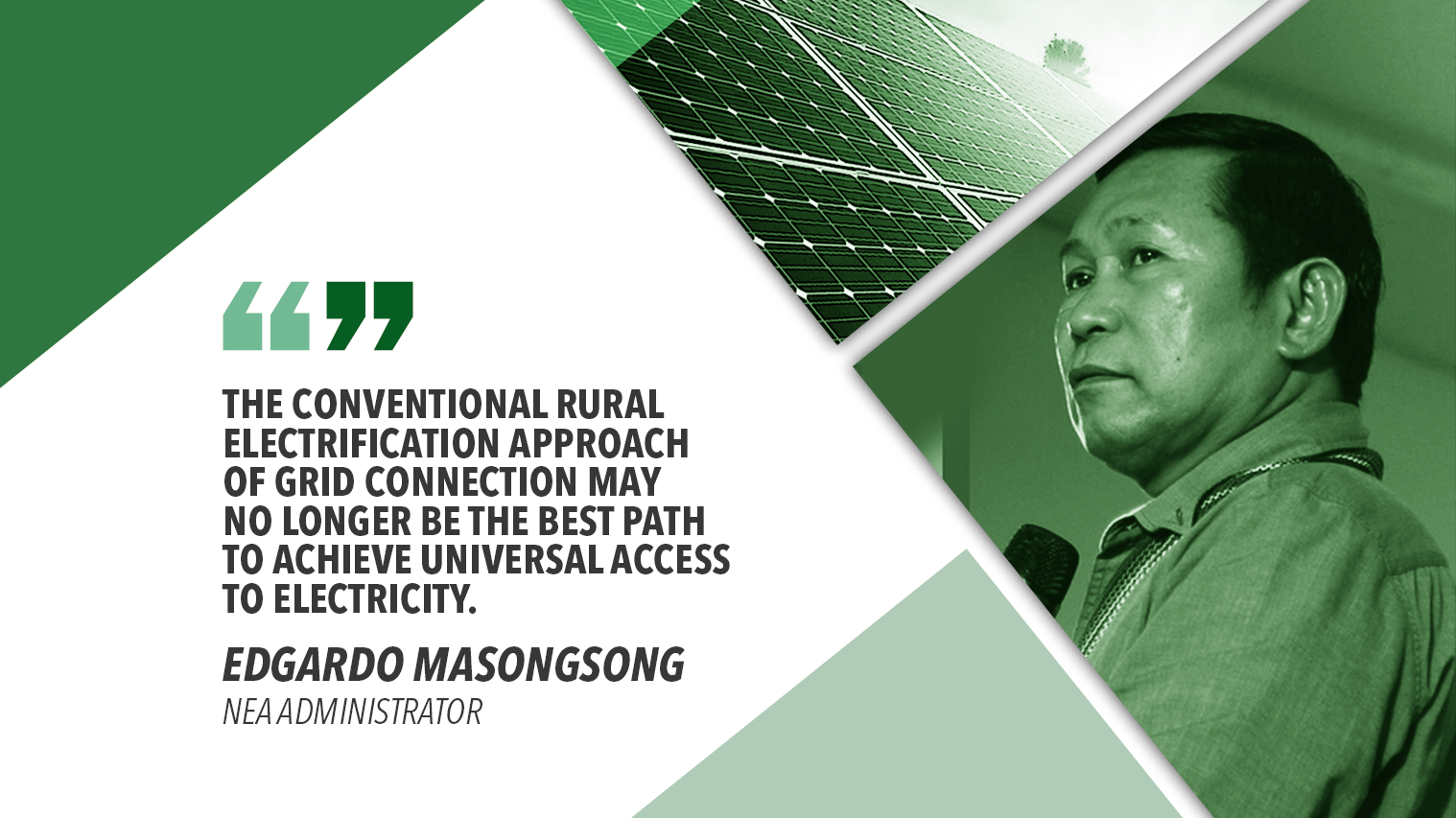The National Electrification Administration (NEA) sees mini-grid systems as viable options to power remote communities across the country, particularly those located far away from the electricity grid.
NEA Administrator Edgardo Masongsong made the statement at the inauguration ceremony of the “Brighten Up” project donated by the State Grid Corporation of China (SGCC) to the Zambales II Electric Cooperative, Inc. (ZAMECO II) that will benefit Baliwet communities in San Marcelino, Zambales.
“Mini-grids, hybrids and solar home systems now play important roles in electrifying far-flung communities isolated from the grid.”
“The conventional rural electrification approach of grid connection may no longer be the best path to achieve universal access to electricity since we are now addressing the last mile of household electrification,” Masongsong said.
“Mini-grids, hybrids and solar home systems now play important roles in electrifying far-flung communities isolated from the grid,” the NEA chief added.
Based on 2015 census of 15,416,144 potential households in the country, the NEA, in partnership with 121 electric cooperatives, has already energized 85 percent or 13,027,402 as of April 2019.
The agency aims to bring that to 100 percent by 2022 but the archipelagic characteristic of the country poses the biggest challenge to the rural electrification program, aside from the funding requirements, the NEA chief said.
“The remoteness of many areas, especially uplands and small islands, makes it impossible for all potential consumers to be connected to the main electricity grid.”
To overcome this, the NEA is looking into potential solutions for communities without grid access that are “flexible, resilient, stable and reliable electricity supply for lighting and income-generating activities at an affordable cost to foster sustainable socio-economic development.”
“The remoteness of many areas, especially uplands and small islands, makes it impossible for all potential consumers to be connected to the main electricity grid,” Masongsong said.
The inauguration ceremony of the “Brigthen Up” project held at Baliwet Elementary School on Thursday, June 27, was followed by a signing of project transfer agreement among NEA, SGCC and ZAMECO II. The signatories were Administrator Masongsong, SGCC Philippines chief representative Shan Shewu, and ZAMECO II Board vice president Luther Agasa.
According to SGCC, the “Brighten Up” project is part of its corporate social responsibility (CSR) in the country, the construction of which began in January this year and completed in May.
The project involves solar micro-grid system to provide power supply with a generation capacity of 76 kWp Solar PV and a battery storage capacity of 414 kWh. It covers the communities of Old and New Baliwet in Barangay Sta. Fe, San Marcelino, Zambales.
“We look forward with enthusiasm that this project will soon provide a better life for the people of New Baliwet and Old Baliwet,” the NEA administrator said.
ZAMECO II General Manager Alvin Farrales said the project is expected to cater the power needs of 1,900 residents in Old and New Baliwet. The electric cooperative is planning to create a Barangay Power Association (BAPA) to manage and operate the collection and maintenance of the solar project, he said.
Joining Administrator Masongsong at the project inauguration was Engr. Ernesto Silvano, Jr., acting department manager of the NEA Total Electrification and Renewable Energy Development.
Also present were Undersecretary Benito Ranque and Director Mario Marasigan from the Department of Energy, officials from SGCC and National Grid Corp. of the Philippines (NGCP), ZAMECO II and local government, among others.

